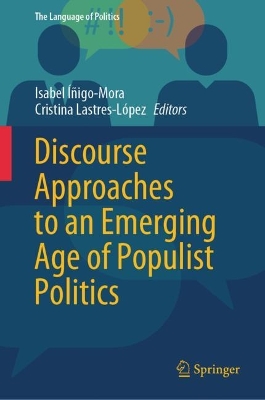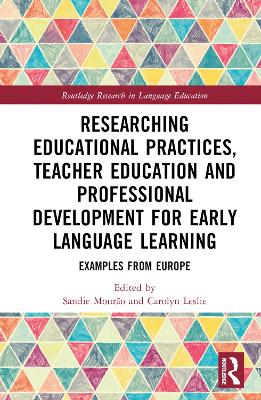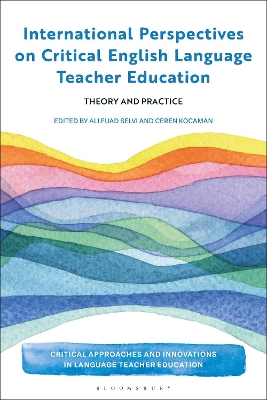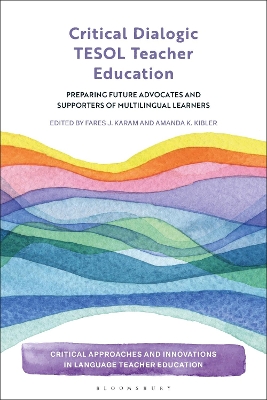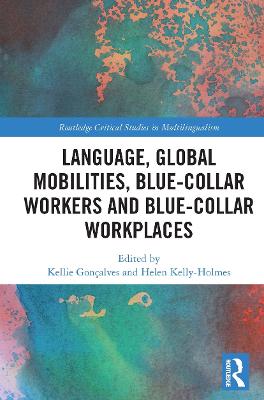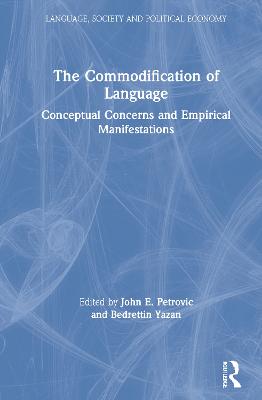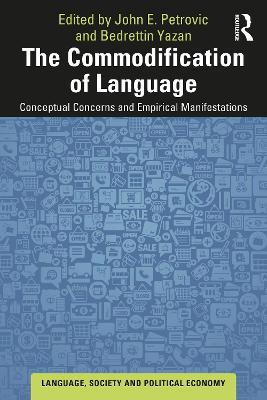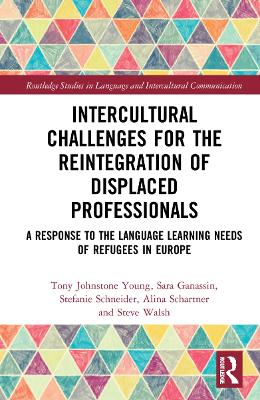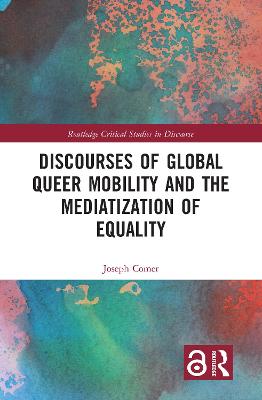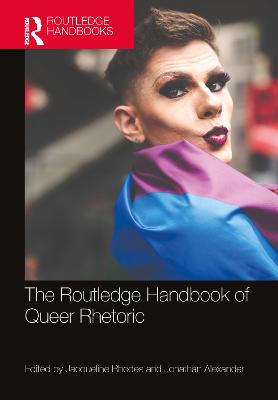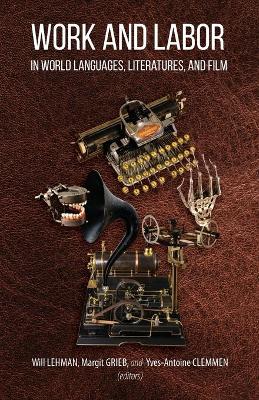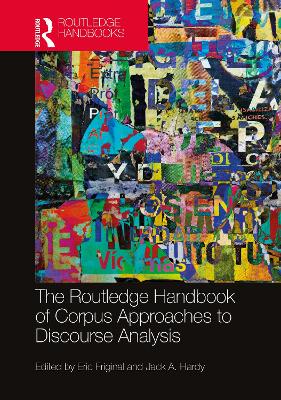Analysing Representations of Social Media in European News Media Discourse
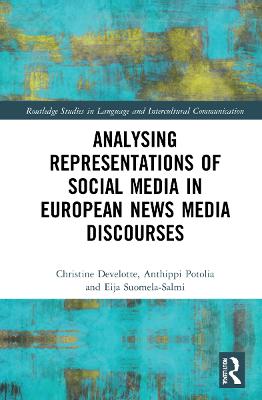 portes grátis
portes grátis
Analysing Representations of Social Media in European News Media Discourse
Develotte, Christine; Potolia, Anthippi; Suomela-Salmi, Eija
Taylor & Francis Ltd
11/2021
296
Dura
Inglês
9781032023519
15 a 20 dias
730
1. Origins of the project
2. The issue and the research question
3. Related studies
4. Study approach
5. Presentation of the International Team and Outline of the Work
6. Outline of the work
Part 1: Theoretical framework and methodology
Chapter 1: Discourse analyses and key research concepts
1. Insights in two analytical perspectives of discourses
1.1. The French School of Discourse Analysis
1.2. Critical Discourse Analysis vs. French Discourse Analysis
2. Discursive construction of social reality
2.1. Discursive exposure and construction of reality
2.2. The communication scheme and transmission of information
2.3. The notion of social representations: definition and characteristics
2.4. The concept of Glocalisation
3. The media discourse and its particularities
3.1. Media discourse and interdiscursivity
3.2. Discursive strategies: The "effects of facts" and the "effects of the real"
3.3. The notion of didacticity
Chapter 2: Corpus and methodology
1. The choice of the free daily newspaper Metro
2. From the existent corpus to the reference corpus
3. The particularities of the reference corpus
4. The study corpus
5. From macro-views... for an ecological approach to the methodological device
6. To the micro-views... for the analysis of the data
6.1. The semiotic markers
6.2. Linguistic markers
Part 2: Contextualisation of and macro level analysis of the object of study
Chapter 3: The three editions of Metro and the editors' perspective
1. Metro newspapers in a nutshell
1.1. Metro Helsinki
1.2. Metro Athens
1.3. Metro Paris
2. The perspective of Metro editors
2.1. Overall characteristics
2.2. Readership in the three countries
2.3. Metro in the local newspaper scene
2.4. News-making processes
2.5. Editors' views on social media
Conclusions
Chapter 4: The emergence and evolution of a new discourse object (2007-2011)
1. Facebook and Twitter in Metro Helsinki
1.1. Corpus in figures: The big picture
1.2. Taking a closer look: Approaching the corpus through the headlines
1.2.1. From Facebook to fb
1.2.2. From tweets about news to tweets about celebrities
1.3. Emergence and evolution: Facebook and Twitter in the articles of Metro Helsinki
1.3.1. Year 2007: Introducing Facebook - from an Internet curiosity to an extensive online community
1.3.2. Year 2008: Facebook's growing business and new ways of using social media
1.3.3. Year 2009
1.3.3.1. Ever growing popularity tinged with criticism towards Facebook, Inc.
1.3.3.2. Twitter's popularity abroad and unpopularity in Finland
1.3.4. Year 2010
1.3.4.1. Facebook: Columns, stars and threats
1.3.4.2. Athletes join the celebrities on Twitter
1.3.5. Year 2011
1.3.5.1. Facebook misuse: From teenagers to politicians
1.3.5.2. Twitter and the "evolution of social media"
1.4. Specificities of the Finnish corpus
1.4.1. Reader participation in the Finnish edition
1.4.2. Editor's views on changing media habits and the future of the press
Conclusion
2. Facebook and Twitter in Metro Paris
2.1. Overview of quantitative data
2.2. From quantitative to qualitative, starting with the titles
2.2.1. From Failbook to Facebook's success stroy
2.2.2. Politics in the Age of Twitter - Lauren Bacall Would Tweet Too
2.3. Facebook and Twitter in the body of the articles, year after year
2.3.1. Year 2007: a timid start marked by paradox
2.3.2. Year 2008: Facebook continues its quiet entry and Twitter appears
2.3.3. Year 2009
2.3.3.1. Facebook, a media for mass mobilisation
2.3.3.2. Twitter enters politics beginning in June
2.3.4. Year 2010
2.3.4.1. Facebook: a medium for mass mobilisations that must be mastered
2.3.4.2. Twitter, a medium for celebrities
2.3.5. Year 2011
2.3.5.1. Facebook, a medium for celebrities and politics
2.3.5.2. Twitter: birth of a feature, 'Twittoscope' a new political barometer
2.4. Specificities of the French corpus
2.4.1. Didactic discourse
2.4.2. 'Twittoscope': a section unique to Metro Paris
Conclusion
3. Facebook and Twitter in Metro Athens
3.1. Focus on the quantitative data
3.2. From quantitative to qualitative: entry by titles??
3.2.1. Facebook: A multifunctional anthropomorphic space
3.2.2. Twitter: Gossip, humor and addiction
3.3. The subjects of "Facebook" and "Twitter" discourse in the body of the articles
3.3.1. Year 2008: Facebook evidence
3.3.2. Year 2009
3.3.2.1. Facebook: capable of good and evil
3.3.2.2. Twitter: a dynamic entry into the lives of the stars
3.3.3. Year 2010
3.3.3.1. Facebook: interact, share, take part
3.3.3.2. Twitter: on the brink of the omnipresence of [famous] people, political news
3.3.4. Year 2011
3.3.4.1. Facebook: towards admission to adulthood
3.3.4.2. Twitter: gossiping, brawling, shouting, etc.
3.4. Specificities of the Greek corpus
3.4.1. Facebook TV
3.4.2. The absence of mediation
Conclusion
Part 3: Social media representations in three different discursive spaces
Chapter 5: Networking: Social media and representations of professional life
1. "Social media and working life" in the three editions of Metro: an overview
1.1. Three national corpora in figures
1.2. Different sub-themes
2. Job search advice for readers
2.1. Promoting advantages while acknowledging risks
2.2. Instructions, warnings and encouragements: A didactic approach
2.3. Who is advised? Who are the users?
3. Model users and usages
3.1. Police as user of social media - a legitimating discourse
3.2. Creating opportunities and enabling individuals
3.3. Dynamic male entrepreneurs as model users
4. Wanted: Social media etiquette
4.1. Confusion and confrontations
4.2. E-reputation and the inevitable digital identity
Conclusion
Chapter 6: Social media and mass mobilisations
1. Presentation of global corpus
1.1. Different types of movements
1.1.1. Social media and international mobilisations
1.1.2. Social media and national political movements
1.1.3. Social media and celebratory movements
1.2. Articles reflecting on the connection between social media and movements
2. Social medias' openness to the world
2.1. Mass mobilisation via social networking sites: Ideas from abroad
2.1.1. In France: a broad geographical spectrum, from Colombia to Russia
2.1.2. For Greece, mobilisations come from Southern Europe
2.1.3. In Finland: Echoes of Spain and northern countries (Canada, Norway, Russia)
2.2. Mass mobilisation via social media: ideas that spread to other countries
3. Creating new forms of meeting in France and Finland
3.1. France, the aperitif phenomenon
3.2. In Finland: Many ideas, for the public good or for partying...
3.3. ... Combined with more classic demonstrations against political figures
4. Excesses, regulation and recycling
4.1. France: Progressively increasing intervention by law enforcement
4.2. Finland: Encouraging citizen responsibility and regulation
4.3. Co-opting movements in France: From the aperitif phenomenon to the sausage/red wine aperitif of the extreme right
Conclusion
Chapter 7: Social media and the Arab Spring
1. Presentation of the corpus from three countries
1.1. Number and publication dates of articles
1.2. Newspaper sections, size and types
2. Delving into the corpus through...
2.1. ... the titles
2.1.1. Digital and social media in the titles
2.1.2. Overview of the titles
2.1.2.1. Finland: beyond revolution
2.1.2.2. France: making a saga of the Arab Spring
2.1.2.3. Greece: moving readers
2.2. ... the illustrations
2.2.1. Finland: champions of the day after
2.2.2. France: from didactic to pathos
2.2.3. Greece: condemning intolerance
3. Towards a granular analysis: the text body
3.1. The Arab Spring as seen by...
3.1.1. ... Finland
3.1.2. ... France
3.1.3. ... Greece
3.2. Social media and the Arab Spring: roles, images, impact
3.2.1. Finland: moderate mention made of social media
3.2.2. France: combat repression, fight for freedom (of expression)
3.2.3. Greece: post revolution takes pride of place
3.3. Opinion articles: a special case
3.3.1. Finland: emerging from its cocoon
3.3.2. France: demand and inform
3.3.3. Greece: anti-imperialism and singing the praises of youth
Conclusion
General conclusion
1. Research questions and the main findings of the study
2. Limitations of this study
3. Free newspapers and social media as the year 2020 approaches
4. Directions for future research
Bibliography
Appendix A Metro Editors - Interview Questions
Appendix B Titles with Keywords "Facebook" and "Twitter" in the Three National Corpora
1. Origins of the project
2. The issue and the research question
3. Related studies
4. Study approach
5. Presentation of the International Team and Outline of the Work
6. Outline of the work
Part 1: Theoretical framework and methodology
Chapter 1: Discourse analyses and key research concepts
1. Insights in two analytical perspectives of discourses
1.1. The French School of Discourse Analysis
1.2. Critical Discourse Analysis vs. French Discourse Analysis
2. Discursive construction of social reality
2.1. Discursive exposure and construction of reality
2.2. The communication scheme and transmission of information
2.3. The notion of social representations: definition and characteristics
2.4. The concept of Glocalisation
3. The media discourse and its particularities
3.1. Media discourse and interdiscursivity
3.2. Discursive strategies: The "effects of facts" and the "effects of the real"
3.3. The notion of didacticity
Chapter 2: Corpus and methodology
1. The choice of the free daily newspaper Metro
2. From the existent corpus to the reference corpus
3. The particularities of the reference corpus
4. The study corpus
5. From macro-views... for an ecological approach to the methodological device
6. To the micro-views... for the analysis of the data
6.1. The semiotic markers
6.2. Linguistic markers
Part 2: Contextualisation of and macro level analysis of the object of study
Chapter 3: The three editions of Metro and the editors' perspective
1. Metro newspapers in a nutshell
1.1. Metro Helsinki
1.2. Metro Athens
1.3. Metro Paris
2. The perspective of Metro editors
2.1. Overall characteristics
2.2. Readership in the three countries
2.3. Metro in the local newspaper scene
2.4. News-making processes
2.5. Editors' views on social media
Conclusions
Chapter 4: The emergence and evolution of a new discourse object (2007-2011)
1. Facebook and Twitter in Metro Helsinki
1.1. Corpus in figures: The big picture
1.2. Taking a closer look: Approaching the corpus through the headlines
1.2.1. From Facebook to fb
1.2.2. From tweets about news to tweets about celebrities
1.3. Emergence and evolution: Facebook and Twitter in the articles of Metro Helsinki
1.3.1. Year 2007: Introducing Facebook - from an Internet curiosity to an extensive online community
1.3.2. Year 2008: Facebook's growing business and new ways of using social media
1.3.3. Year 2009
1.3.3.1. Ever growing popularity tinged with criticism towards Facebook, Inc.
1.3.3.2. Twitter's popularity abroad and unpopularity in Finland
1.3.4. Year 2010
1.3.4.1. Facebook: Columns, stars and threats
1.3.4.2. Athletes join the celebrities on Twitter
1.3.5. Year 2011
1.3.5.1. Facebook misuse: From teenagers to politicians
1.3.5.2. Twitter and the "evolution of social media"
1.4. Specificities of the Finnish corpus
1.4.1. Reader participation in the Finnish edition
1.4.2. Editor's views on changing media habits and the future of the press
Conclusion
2. Facebook and Twitter in Metro Paris
2.1. Overview of quantitative data
2.2. From quantitative to qualitative, starting with the titles
2.2.1. From Failbook to Facebook's success stroy
2.2.2. Politics in the Age of Twitter - Lauren Bacall Would Tweet Too
2.3. Facebook and Twitter in the body of the articles, year after year
2.3.1. Year 2007: a timid start marked by paradox
2.3.2. Year 2008: Facebook continues its quiet entry and Twitter appears
2.3.3. Year 2009
2.3.3.1. Facebook, a media for mass mobilisation
2.3.3.2. Twitter enters politics beginning in June
2.3.4. Year 2010
2.3.4.1. Facebook: a medium for mass mobilisations that must be mastered
2.3.4.2. Twitter, a medium for celebrities
2.3.5. Year 2011
2.3.5.1. Facebook, a medium for celebrities and politics
2.3.5.2. Twitter: birth of a feature, 'Twittoscope' a new political barometer
2.4. Specificities of the French corpus
2.4.1. Didactic discourse
2.4.2. 'Twittoscope': a section unique to Metro Paris
Conclusion
3. Facebook and Twitter in Metro Athens
3.1. Focus on the quantitative data
3.2. From quantitative to qualitative: entry by titles??
3.2.1. Facebook: A multifunctional anthropomorphic space
3.2.2. Twitter: Gossip, humor and addiction
3.3. The subjects of "Facebook" and "Twitter" discourse in the body of the articles
3.3.1. Year 2008: Facebook evidence
3.3.2. Year 2009
3.3.2.1. Facebook: capable of good and evil
3.3.2.2. Twitter: a dynamic entry into the lives of the stars
3.3.3. Year 2010
3.3.3.1. Facebook: interact, share, take part
3.3.3.2. Twitter: on the brink of the omnipresence of [famous] people, political news
3.3.4. Year 2011
3.3.4.1. Facebook: towards admission to adulthood
3.3.4.2. Twitter: gossiping, brawling, shouting, etc.
3.4. Specificities of the Greek corpus
3.4.1. Facebook TV
3.4.2. The absence of mediation
Conclusion
Part 3: Social media representations in three different discursive spaces
Chapter 5: Networking: Social media and representations of professional life
1. "Social media and working life" in the three editions of Metro: an overview
1.1. Three national corpora in figures
1.2. Different sub-themes
2. Job search advice for readers
2.1. Promoting advantages while acknowledging risks
2.2. Instructions, warnings and encouragements: A didactic approach
2.3. Who is advised? Who are the users?
3. Model users and usages
3.1. Police as user of social media - a legitimating discourse
3.2. Creating opportunities and enabling individuals
3.3. Dynamic male entrepreneurs as model users
4. Wanted: Social media etiquette
4.1. Confusion and confrontations
4.2. E-reputation and the inevitable digital identity
Conclusion
Chapter 6: Social media and mass mobilisations
1. Presentation of global corpus
1.1. Different types of movements
1.1.1. Social media and international mobilisations
1.1.2. Social media and national political movements
1.1.3. Social media and celebratory movements
1.2. Articles reflecting on the connection between social media and movements
2. Social medias' openness to the world
2.1. Mass mobilisation via social networking sites: Ideas from abroad
2.1.1. In France: a broad geographical spectrum, from Colombia to Russia
2.1.2. For Greece, mobilisations come from Southern Europe
2.1.3. In Finland: Echoes of Spain and northern countries (Canada, Norway, Russia)
2.2. Mass mobilisation via social media: ideas that spread to other countries
3. Creating new forms of meeting in France and Finland
3.1. France, the aperitif phenomenon
3.2. In Finland: Many ideas, for the public good or for partying...
3.3. ... Combined with more classic demonstrations against political figures
4. Excesses, regulation and recycling
4.1. France: Progressively increasing intervention by law enforcement
4.2. Finland: Encouraging citizen responsibility and regulation
4.3. Co-opting movements in France: From the aperitif phenomenon to the sausage/red wine aperitif of the extreme right
Conclusion
Chapter 7: Social media and the Arab Spring
1. Presentation of the corpus from three countries
1.1. Number and publication dates of articles
1.2. Newspaper sections, size and types
2. Delving into the corpus through...
2.1. ... the titles
2.1.1. Digital and social media in the titles
2.1.2. Overview of the titles
2.1.2.1. Finland: beyond revolution
2.1.2.2. France: making a saga of the Arab Spring
2.1.2.3. Greece: moving readers
2.2. ... the illustrations
2.2.1. Finland: champions of the day after
2.2.2. France: from didactic to pathos
2.2.3. Greece: condemning intolerance
3. Towards a granular analysis: the text body
3.1. The Arab Spring as seen by...
3.1.1. ... Finland
3.1.2. ... France
3.1.3. ... Greece
3.2. Social media and the Arab Spring: roles, images, impact
3.2.1. Finland: moderate mention made of social media
3.2.2. France: combat repression, fight for freedom (of expression)
3.2.3. Greece: post revolution takes pride of place
3.3. Opinion articles: a special case
3.3.1. Finland: emerging from its cocoon
3.3.2. France: demand and inform
3.3.3. Greece: anti-imperialism and singing the praises of youth
Conclusion
General conclusion
1. Research questions and the main findings of the study
2. Limitations of this study
3. Free newspapers and social media as the year 2020 approaches
4. Directions for future research
Bibliography
Appendix A Metro Editors - Interview Questions
Appendix B Titles with Keywords "Facebook" and "Twitter" in the Three National Corpora


